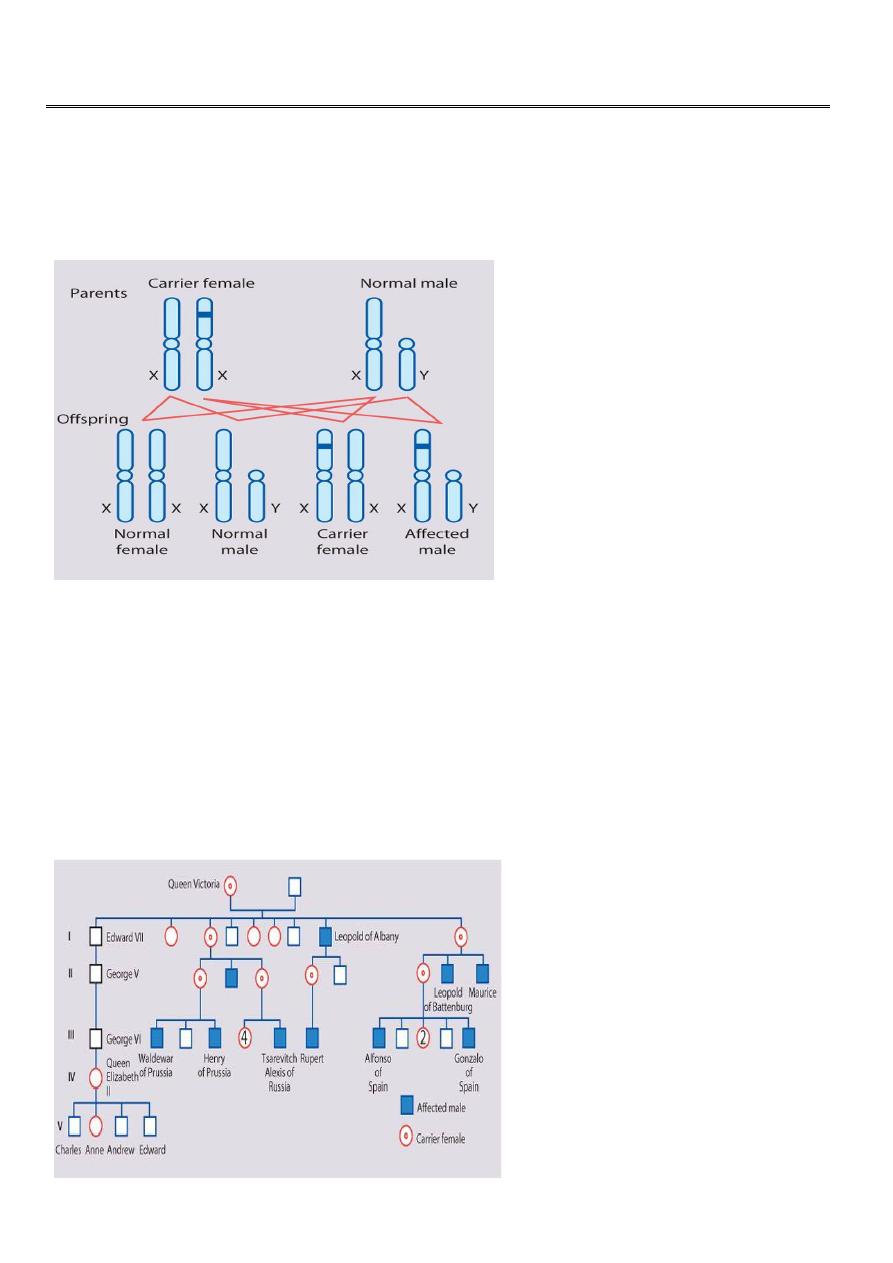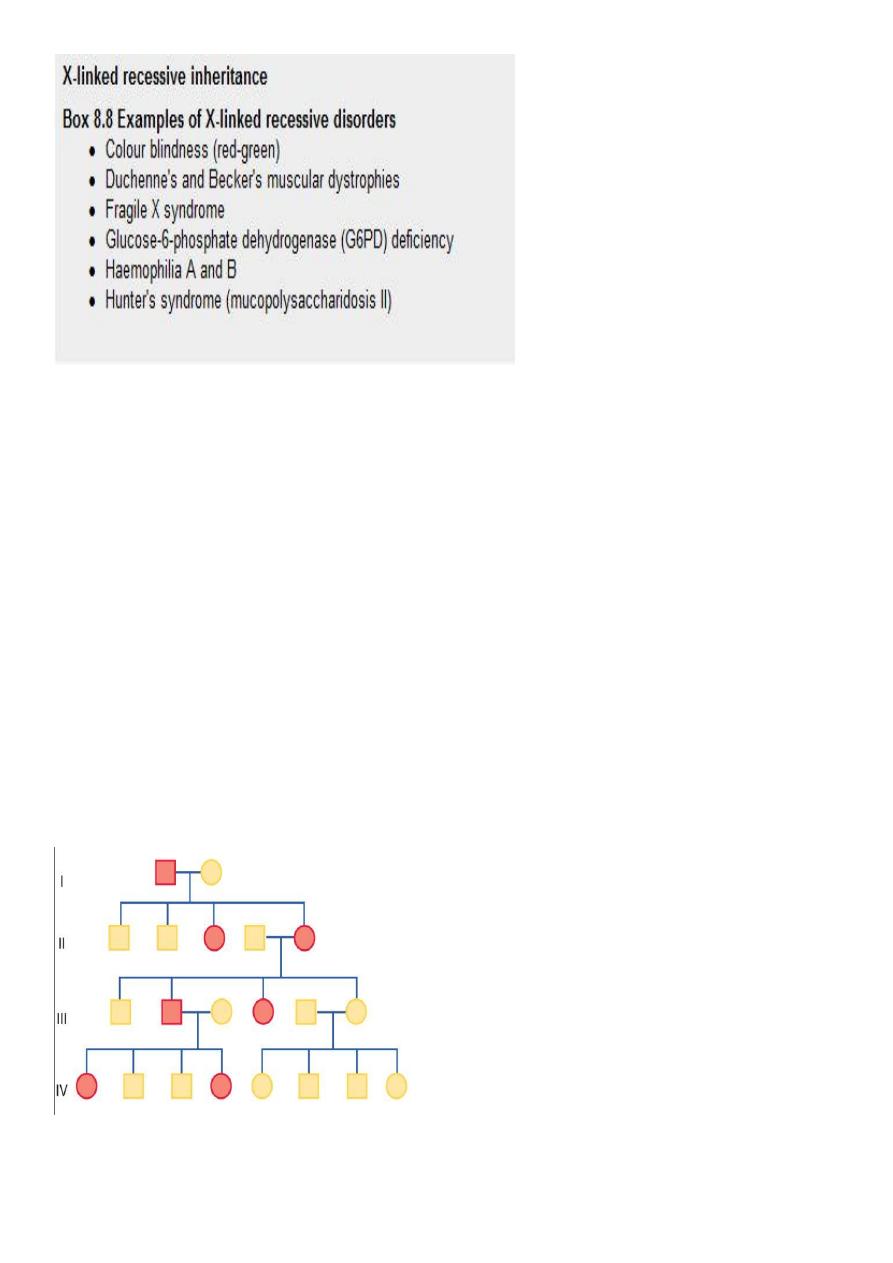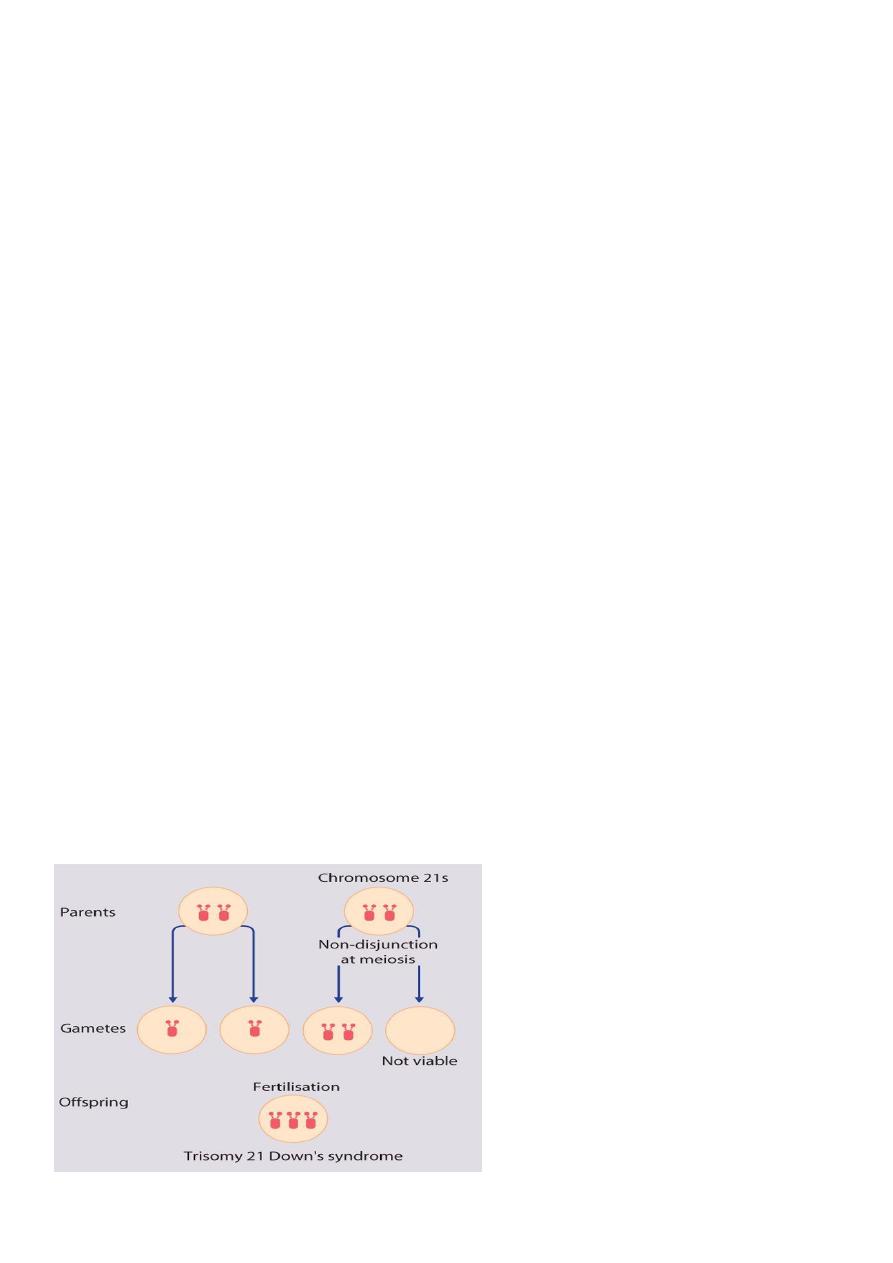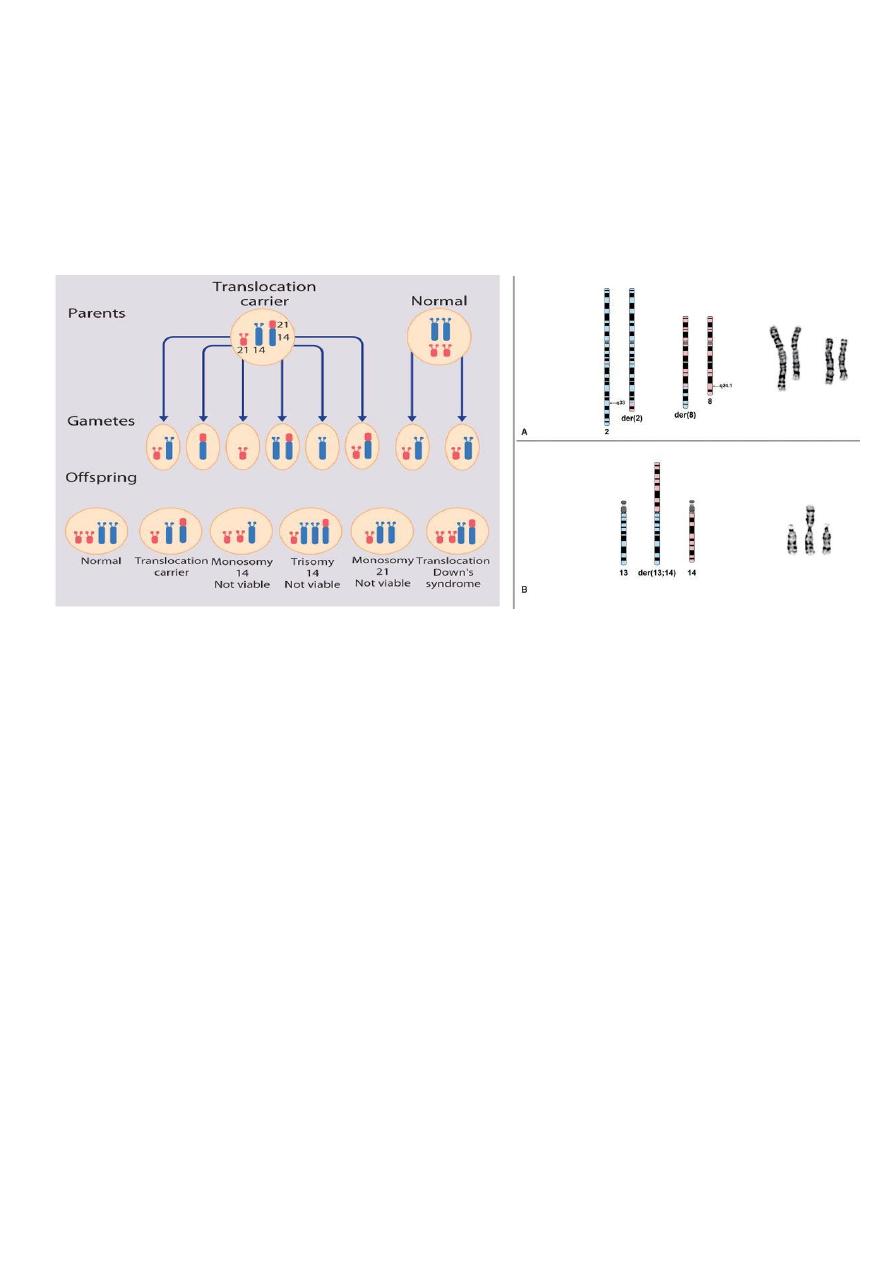
1
Fifth stage
Pediatric
Lec-9
.د
أوس
7/3/2016
X-linked recessive inheritance
Over 400 disorders have been described in which an abnormal recessive gene is carried on
the X chromosome
1. males are affected
2. occasionally a female carrier shows mild signs of the disease (manifesting carrier)
3. each son of a female carrier has a 1 in 2 (50%) risk of being affected
4. each daughter of a female carrier has a 1 in 2 (50%) risk of being a carrier
5. daughters of affected males will all be carriers
6. sons of affected males will not be affected, since a man passes a Y chromosome to his
son

2
SUMMARY:
1. males are affected; females can be carriers but are usually healthy or have mild
disease
2. family history may be negative - new mutations and gonadal mosaicism
3. identifying female carriers is important to be able to provide genetic counselling
X-linked dominant inheritance:
In which female carriers typically manifest abnormal findings. An affected man will have
only affected daughters and unaffected sons, and half of the offspring of an affected
woman will be affected .
Some X-linked dominant conditions are lethal in males. An example is incontinentia
pigmenti.

3
Chromosomal abnormalities:
Chromosomal abnormalities are either numerical or structural. They occur in
approximately 10% of spermatozoa and 25% of mature oocytes and are a very common
cause of early spontaneous miscarriage
The estimated incidence of chromosomal abnormalities in live-born infants is about 1
in 150 and these usually, but not always, cause multiple congenital anomalies and
learning difficulties. Acquired chromosomal changes play a significant role in
carcinogenesis and tumour progression.
Down's syndrome (trisomy 21)
This is the most common autosomal trisomy and the most common genetic cause of
severe learning difficulties. The incidence in live-born infants is about 1 in 650.
Cytogenetics
The extra chromosome 21 may result from non-disjunction, translocation or
Mosaicism
Non-disjunction (94%)
most cases result from an error at meiosis
the pair of chromosome 21s fails to separate, so that one gamete has two chromosome 21s
and one has none
fertilisation of the gamete with two chromosome 21s gives rise to a zygote with trisomy 21
parental chromosomes do not need to be examined.

4
Translocation (5%)
When the extra chromosome 21 is joined onto another chromosome (usually chromosome
14, but occasionally chromosome 15, 22 or 21), this is known as an unbalanced
Robertsonian translocation. An affected child has 46 chromosomes, but three copies of
chromosome 21 material. In this situation, parental chromosomal analysis is essential since
one of the parents carries a balanced translocation in 25% of cases. Translocation carriers
have 45 chromosomes, one of which consists of the two joined chromosomes
the risk of recurrence is 10-15% if the mother is the translocation carrier and about 2.5% if
the father is the carrier
if a parent carries the rare 21:21 translocation, all the offspring will have Down's syndrome
if neither parent carries a translocation (75% of cases), the risk of recurrence is <1%.
Mosaicism (1%)
In mosaicism some of the cells are normal and some have trisomy 21. This usually arises
after the formation of the zygote, by non-disjunction at mitosis. The phenotype may be
milder in mosaicism.
